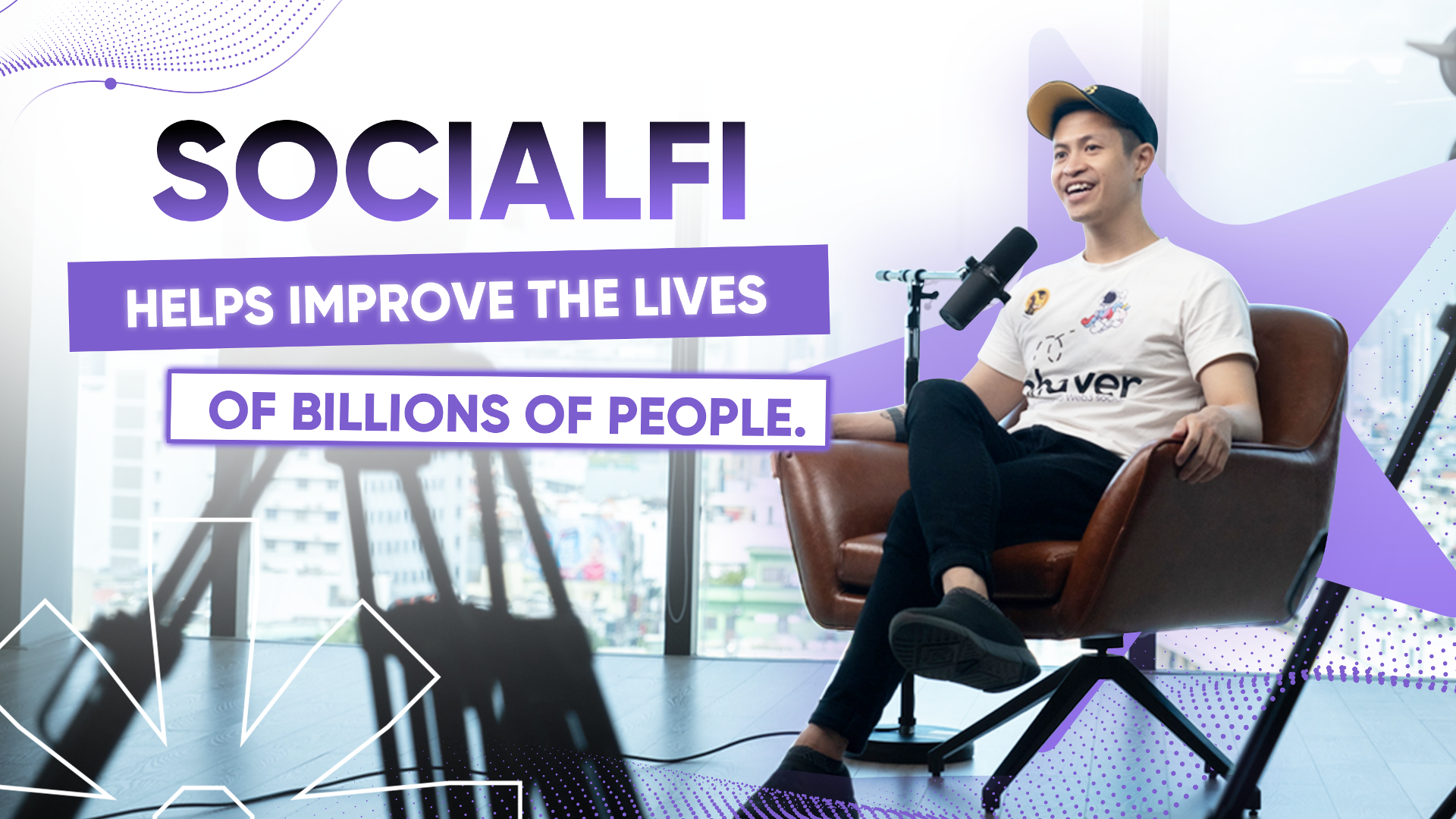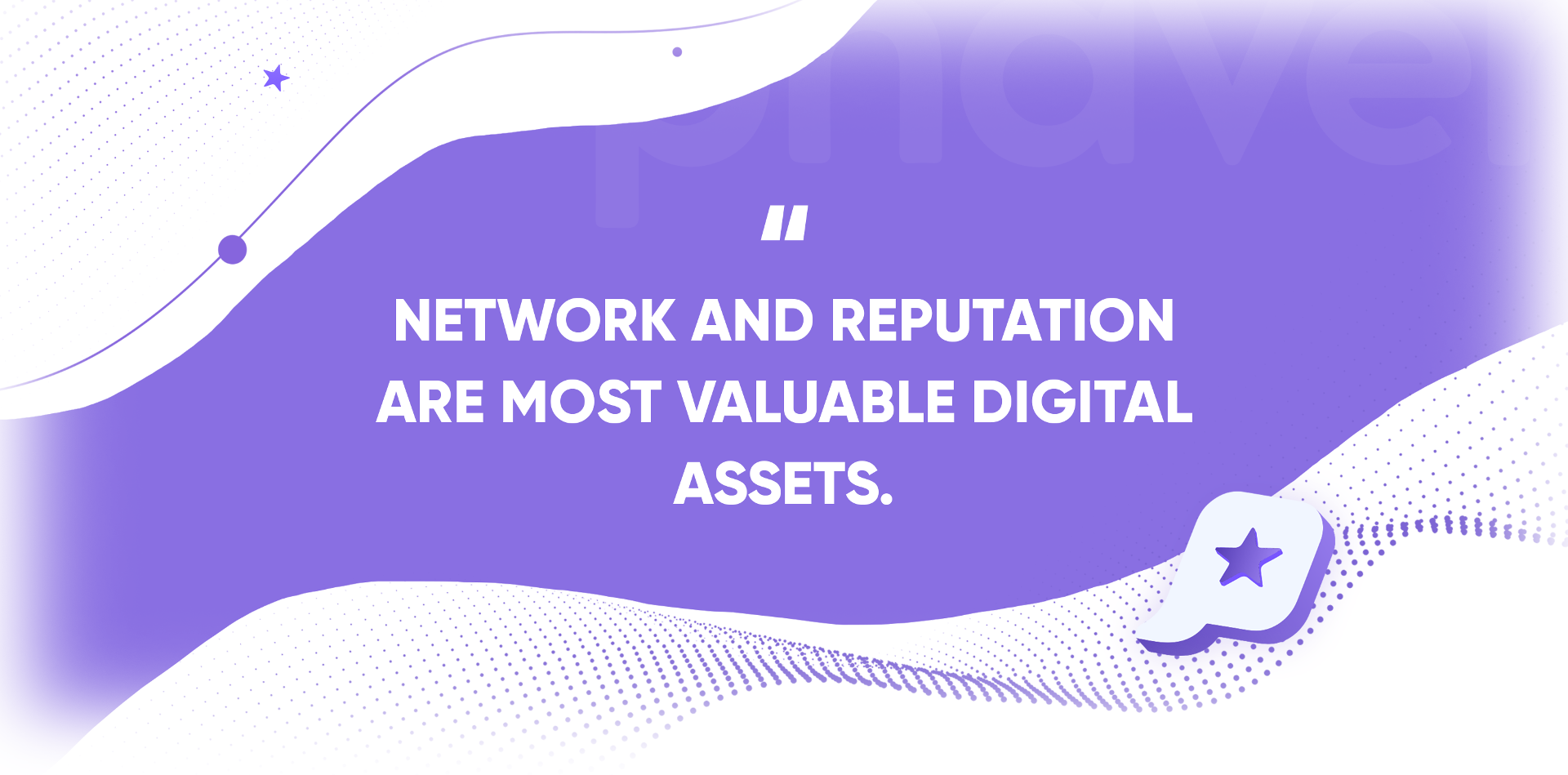
Phaver’s Head of Strategy: “SociaFi helps change the lives of billions of people”
Interlock had the opportunity to meet Jesse Khanh Tran, a passionate young entrepreneur who built startups in traditional and Web3 spaces. He is the Chief Strategy Officer at Phaver, the Web3 social network application with the most extensive user base.
Jesse stands out for his proactive mindset, fearlessly seeking new solutions when he identifies a problem. Like Rens Coffee, a startup he previously founded, Khanh Tran aims to expand SocialFi to Vietnam, recognizing the potential for growth and expansion in this market.

How does the SocialFi application play a role in the Web3 world? What made you decide to build a SocialFi project like Phaver?
- Social networks have the most significant potential to improve the lives of billions of people compared to any other application in blockchain technology.
Web2 applications like X and Reddit constantly bring significant changes that harm their users. This serves as a reminder to people that they don't indeed have control or choice.
Sometimes, users are banned or have their accounts deleted for violating new rules, regardless of their loyalty as users.
With decentralized social protocols like Lens, anyone can create a decentralized social profile, retain ownership of their social images and content, and move between different social apps and platforms. Unlike Web2 social networks, where data is siloed within an app, and the app controls everything, Lens social profiles cannot be revoked or deleted at any time, not even by the Lens company itself. This creates an immutable backup of users' social images on the blockchain that can be utilized across various applications.
For many individuals, their online network and reputation are their most valuable digital assets, sometimes even more critical than financial ownership. We see enabling ownership and interaction with these assets on the blockchain as a significant opportunity to restore control to individuals rather than platforms.

For content creators and influencers, the SocialFi platform allows them to own their relationship with their audience. Additionally, it serves as a fair rewards system for those who contribute to the platform's development.
Recently, Twitter has launched several new features requiring users to pay a fee to use them. Is this an opportunity for Web3 platforms?
- The opportunity for SocialFi has emerged in 2018 and 2019.
The problem with current social platforms lies in user data violations, such as the data scandal involving Facebook or Twitter, as well as issues related to community management. Traditional project teams often need to provide reasonable justifications to users to make arbitrary decisions. These issues have been present since 2016.
The emergence of Meta Threads, for example, is more than just due to Elon Musk taking over Twitter and implementing core changes. Ultimately, it is just a "new wine in an old bottle," an "upgraded version of Instagram." These platforms still operate in a centralized manner. Applications continue to collect user information and exploit it in various ways. Users do not have true ownership of their data.

For SocialFi in general and Phaver in particular, what is the most challenging problem to solve?
- The most challenging problem is user habits. Users are already accustomed to opening Twitter, Facebook, or Reddit. Not to mention Web3, it is already challenging to ask them to switch to another Web2 social media application.
Compared to Web2 giants like Facebook and (previously) Twitter, Web3 social networks are still relatively small. This presents both a challenge and an opportunity. Based on my experience, the traffic generated from a month-long campaign on Web3 is still not comparable to advertising campaigns on traditional platforms.
This problem is not specific to SocialFi or Web3; it is a matter of changing user preferences. Almost all SocialFi networks are new businesses with new brands. We need to find ways to approach users from various angles. SocialFi gives users the narrative of empowering them to manage their data and even earn money by sharing it with others.
On the flip side, we don't see any existing social networks willing to give up the large amount of data and audience they have collected to transition to the blockchain. Becoming Web3 is not just about adding some blockchain features but returning ownership of user data to the users themselves and allowing them to take it elsewhere as they see fit.

Additionally, accessibility needs to be easy and not heavily reliant on technology. The process of using Web3 applications is still quite complex, as users have to deal with wallet connections and various technicalities. In addressing this issue, Phaver offers a solution allowing users to create an account through Web2 accounts, such as Facebook or Meta, without needing a Lens or Cyber Connect profile.
Phaver is a social networking application on Web3 that still allows users to log in through a different Web2 account such as Google or Facebook. Does this impact the development of the project?
- While this may slow down the development process slightly in the current time, it also ensures that we can provide an easy and flexible access process for everyone. As a result, Phaver has built a larger active community than any fully native protocol within the Lens, Cyber Connect, or Farcaster ecosystem.
In the future, Phaver will optimize the access process to provide everyone with a wallet, even if they don't have one while maintaining an option for Web2-style login with easy and secure password recovery and other features that regular users expect.
How does Phaver address the issue of moderating hate speech, and what sets its community standards apart from other platforms? How does the moderation and freedom of speech boundary work on Phaver to protect users?
- As Phaver operates on the app stores of Apple and Google, we must comply with their rules and any applicable regulations from the EU and moderate certain types of content.
However, the significant difference compared to Web2 applications is that when a user connects a Lens protocol profile, all their content goes into the Lens and cannot be moderated at the protocol level on the blockchain. Still, each app can have its moderation. This means that no one is faced with a single app gatekeeper for their content, and it allows for other apps to emerge with different content filtering levels based on user preferences.
For Phaver, we focus on external requirements and keeping spammers and scammers out of the app, but we will also deploy decentralized moderation opportunities. This means allowing users and trusted communities to moderate content as user numbers increase.

What areas is Phaver prioritizing to attract more users to its platform?
- Currently, Phaver is focusing on connecting with various NFT communities.
The market prices of NFT projects related to Phaver have all increased by at least two times. In the future, Phaver may expand further into GameFi, as it shares similarities with NFTs. However, Phaver has not progressed significantly in DeFi (decentralized finance).
Regarding incentives, what approach will Phaver choose to strike a balance and provide the most satisfying answer to users between airdropping a significant amount to a small group versus a smaller airdrop to a larger group?
- The biggest issue with airdrops is distributing to only a few people but rather the fact that farmers and botters often snatch the majority of the airdrops intended for genuine individual users, thus undermining the purpose of the rewards.
Phaver actively focuses on pushing non-genuine users out of our reward system. The Trust Score at the profile level and the reward structure have been effectively established to prevent actions by bots and credit farmers. Therefore, we hope that the distribution of Phaver app rewards will be exclusively reserved for genuine users who genuinely contribute value to the community.

One of the unique features of Phaver is its gamified reward mechanism, which rewards content creators, helpful moderators and administrators. By making users feel valued through reward distribution, Phaver uniquely attracts influential leaders and influencers, especially in cryptocurrency, who often suffer from income loss or even censorship on Web2 social platforms.
With encouraged contributions, gamified rewards, and reputation-based mechanisms, Phaver aims to provide the most relevant content for each user's timeline in a novel and less manipulatable way. As users increase their reputation on the platform, they will enjoy more benefits, including the ability to convert earned points into the native tokens of the platform upon the deployment of Phaver's token, planned for the end of this year, 2023.
